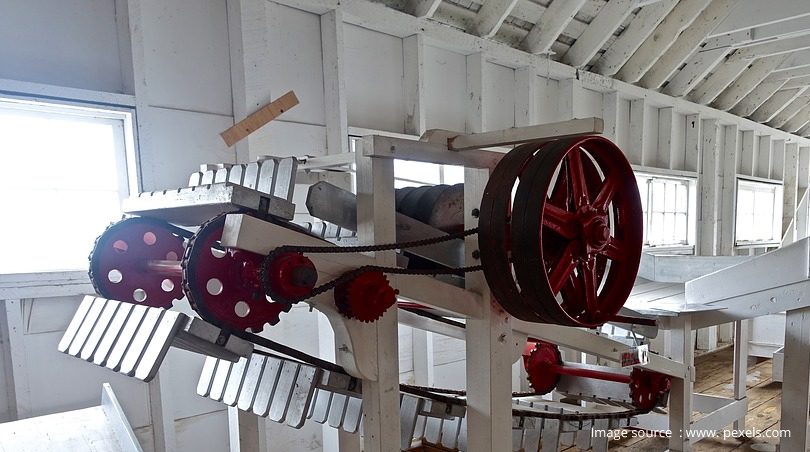During machining, a part is subjected to various kinds of loads and vibrations. Due to these operations, there are high chances that work piece may get dislocated from its position,resulting in part or tool tip damage. In the worst case, it can further endanger the life of the machine operator. Therefore, it is very important to restrict all the Degree of freedom (DOF) of the work piece for any kind of machining operation.
In work holding devices, fixture plays an important role. A fixture is the part of machinery which holds the other parts to its required fixed location.
In fixture designing one needs to consider different variations of part shape that are possible, type of material to be used and also the structural design of fixture so that it holds the part in a fixed position without interfering with the tool operations. Another factors that needs to be evaluated is the, selection of clamp mechanism in a way that it is easy to load and unload the work piece., Deciding which face of the work piece is to be made the base for machining is also an important deciding factor as it can ultimately reduce the number of time the part is to be unloaded and loaded again (for change of orientation).
IMPORTANT ELEMENTS OF FIXTURE
- Clamping/ Holding elements
- Guide/ Locating elements
- Support/ Base elements
Clamping elements holds the work piece against the fixture base. For industrial use, clamps may be operated manually, hydraulically, pneumatic or motorized. Selection of clamping element depends on the tool force applied which is further driven by factors such as speed, feed of cut, type of operation to be performed, etc. Clamping force should be sufficient to hold part against the external machining loads. At the same time, it should not cause any kind of part bending, as this will increase part inaccuracy when part springs back to its original position on the removal of clamp load. Spring back action can easily be avoided by correct positioning of clamps with their line of action co-incident to the line of support. Additionally, it is always desired for the clamping mechanism to not only be strong but also simple to help in reducing time for loading and unloading the parts. Clamping device may include standard parts like lever clamps for plain surface, screw clamps for round work piece etc.
Position for guiding element in fixture should be such that all Degree of freedom of work piece is restricted.,For this, 3-2-1 principle comes into the picture. Accurate positioning of work piece w.r.t machine origin is done by these guiding elements. Padding elements may be used alongside guide elements, so as to avoid machined surface damage. Locating elements themselves need to be toughened and hardened in order to provide long life accurate positioning. It is always recommended to use standard parts because this increases the flexibility of the fixture to accommodate different parts shapes.
Support elements absorb all the tool cutting forces and inertial loads of tool and work piece. The material of the supporting element has to also damp the vibration excitation that may be generated by the machine or by cutting operation of the tool. The contact area of supporting element should be large enough to support the work piece. It must keep the part in a stable position. It is always advisable to use adjustable type support elements, so as to accommodate parts of varying length.
In addition to it, the design of the fixture is to be such that the coolant flow is not restricted and there is no chip accommodation.
Common problems in fixture:
1. Work piece displacement
- Under high- frequency vibration from machining operation due to high feed or from a nearby source like motor, the part is likely to be displaced from its position. With the use of adjustable devices like clamps or support, there are high chances the part may dislocate because of the set of clearance given between adjustable parts for sliding motion.
- Use of vibration damping pads, appropriate machining tools and optimised operating condition can help in reducinge vibration. It is always advised to use these adjustable devices for rough machining operation.
2. Improper placement of work piece
- Sharp corners and the presence of blur can lead to improper rest of work piece.
- All the sharp corners should be removed. To support the cylindrical parts, support with proper taper angle should be used in order to maintain the part stability during the machining operation.
3. High idle time
- High idle machine time for part loading and unloading.
- Use of automated and hydraulic means of clamping can reduce time. Additionally, with the use of hydraulic clamp, desired clamp pressure can be easily obtained.
4. High machining time (Improper sequence of part orientation selected for machining)
- High machining time
- Beside adjusting machine operating condition, machining time can further be reduced by selecting an appropriate sequence for machining surface. For this, the surface that is pre- machined and has more relation with surfaces to be machined is selected as the base surface.
5. Lack of standardisation
- High fixture cost
- Fixture designer needs to be aware of all parts design for which fixture is to be made, because at the end the fixture cost is going to directly affect part cost. Therefore, it is very important that the design is fool proof.
6. Damaged machined surface
- The machined surface may get damaged by guiding and clamping elements.
- Use padding element along with the guiding element. Appropriate clamping pressure should be used.
What IDEAS does?
- Certified professionals for 3D part modelling, assembly and drafting.
- BOM preparation and comparison for parts that are to be purchased or manufactured.
- Interference/ clash analysis.
- Tool path verification and programming for CNC machine.
